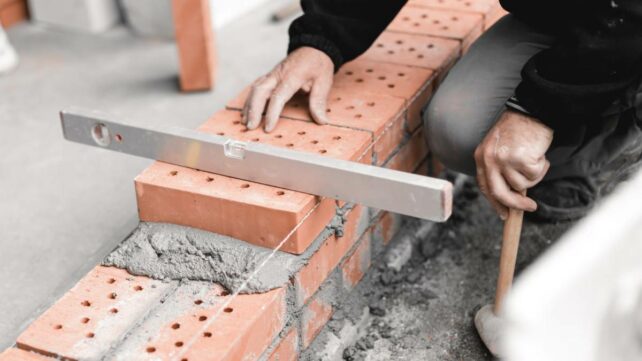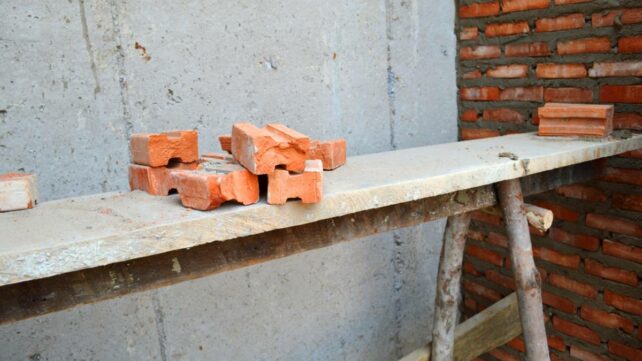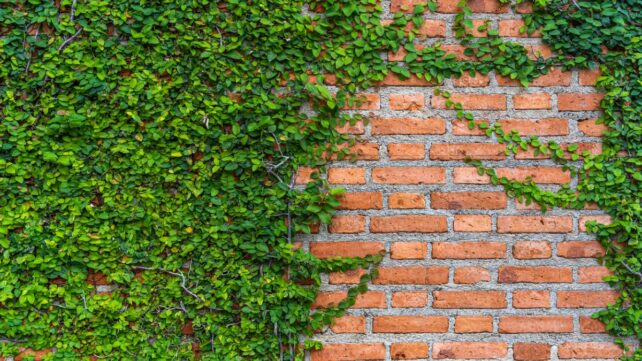Tips on building a brick wall: A guide for homeowners
Bricklaying is a skill used for constructing walls, buildings, and other structures with bricks and mortar. If you’re thinking about building a brick wall for your home renovation project, you should equip yourself with the right knowledge and tools. From planning to disposal, building a brick wall requires attention to detail and careful execution.
Building a brick wall can be a physically demanding job since it requires physical strength and endurance to handle heavy materials and precision to stabilise the structures properly. To help better understand the challenges and rewards of bricklaying, this article explores essential techniques and considerations you should know before starting your project.
When planning and preparing
It’s important to have proper planning before you start building a small brick wall. Planning helps avoid costly mistakes or potential issues that can jeopardise the timeframe of your renovation. Additionally, it also helps provide a clear roadmap for the entire process.
When preparing the site, clear the area of any debris, vegetation, or obstacles that could interfere with the foundation or wall alignment. Homeowners should also check for any underground utilities or pipes that excavation might affect. Another thing you should check for is the soil type. Make sure its current state and condition are suitable to support a brick wall.
When setting the foundation
Ensuring a proper foundation is crucial to creating a sturdy and long-lasting structure when constructing a brick wall.
1. Prep the area
Start by marking the boundaries of where the brick wall will be built. For this stage, you can drive wooden stakes or string to make a rectangular trench. Dig with your desired depth and width within the perimeter you’ve created.
2. Get rid of debris
Remove any rocks, roots, debris, or other potential obstacles from the trench to create a clean project area. This step helps prevent any obstruction or future complications that can compromise the stability of the brick wall foundation.
3. Make sure the bottom is even
Use a level to check if the bottom of the trench is even. An uneven base can lead to an unstable foundation, prompting long-term issues if left unattended. Adjust and re-level as necessary to achieve a flat, consistent surface.
4. Compact the soil at the bottom
Make sure the soil at the bottom of the trench is shovelled tightly against each other to provide a solid base for your foundation, as well as to reduce the risk of settling or shifting. You can use a hand tamper or a mechanical compactor for this purpose.
When laying bricks
The key to building a reliable and aesthetically pleasing brick wall is methodically laying each brick in a sturdy and uniform pattern.
1. Start with a solid foundation
Ensure the foundation is completely levelled and has been properly double-checked. Any imperfections in the foundation will be felt as you build up the brick wall.
2. Prepare the mortar and begin layering the first course
Mix the mortar to the right consistency–workable but not too wet. Mix the mortar to the right consistency – workable but not too wet. Start at one end, laying the first brick with mortar on the foundation and ‘buttering’ the brick ends. Use a spirit level to ensure each brick is level and aligned. This first course sets the standard for the entire wall.
3. Check if alignment and level are up to par with your standards
Regularly check the bricks are level and the wall is vertically straight, using a spirit level and plumb line. This is crucial for structural integrity and appearance.
You can also adjust the wall’s alignment using different techniques. For instance, you can drive wooden stakes or run a string line between the end bricks of each row to maintain their positions. This ensures that each row is aligned with one another throughout the entire brick building process. Staying diligent helps avoid issues that affect or delay the project’s completion.
4. Build in sections
Building in sections is a practical strategy bricklayers employ to ensure precision, maintain efficiency, and uphold quality throughout construction.
By dividing the wall into manageable segments, typically consisting of three to five courses of bricks, you can systematically work through each section to achieve optimal alignment, levelness, and mortar consistency before advancing to the next row.
When creating an opening and adding finishing touches
Adding finishing or personal touches to a brick wall can greatly improve its looks and durability.
1. Pointing
Pointing involves filling and finishing the mortar joints after laying the bricks. Use a pointing trowel to compress the mortar into the joints and create a neat, uniform appearance. You can use different pointing styles, such as flush, recessed, or weather-struck, based on the desired look and the wall’s exposure to weather.
2. Sealing or waterproofing
Put a sealant or water-repellent coat on the brick wall to prevent moisture from seeping into the cracks, which can cause damage over time. Use breathable sealants that allow moisture to escape from the wall while preventing water ingress.
3. Capping
Add capstones or coping stones to the top of the brick wall to protect it from water damage and give it a finished look. Coping stones should be slightly sloped to allow water to run off easily, preventing water accumulation on the wall.
4. Decorating and landscaping
As a personal touch, you can give it a fresh coat of paint and add patterns, arches, or brick detailing to your brickwork to enhance its overall visual appeal. You can even incorporate landscaping elements, like plants, lighting, pathways, or paved areas, to enhance your brickwork’s surrounding area.
For maintenance and care
1. Regular inspection
Over time, cracks, loose or chipped bricks, and deteriorating mortar joints may have developed due to settling, thermal expansion, or weathering. Regular visual inspections of the brick wall should be conducted to identify any signs of wear or damage.
Hiring a consultant or expert to inspect your walls and determine the cost of building a brick wall may also be wise. Professional bricklayers can give you a thorough assessment of any underlying issues and identify or address them before they become major problems. They can offer expert advice on repairs and maintenance, helping extend your brick wall’s life and durability.
2. Cleaning
Clean the brick wall periodically to remove dirt, moss and algae. Use a mild detergent solution and a soft brush or a low-pressure washer. Avoid harsh chemicals or high-pressure washing as these can damage the bricks and mortar.
3. Sealing
Add a coat of breathable, water-repellent sealant to protect the brick wall from absorbing moisture. This helps prevent water ingress, which can cause damage over time. Ensure the sealant allows moisture to escape from the wall to prevent moisture from being trapped inside.
4. Vegetation control
If your brick wall is decorated with plants and greenery, keep them under control through frequent trimming and rooting. If left unchecked, their roots can penetrate the mortar and bricks, resulting in structural instability or damage over time.
5. Repointing
Repointing involves replacing old, damaged mortar with new ones. This should be done every few years or when you notice the mortar crumbling or gaps forming between bricks. Use a mortar mix that matches the original in composition and colour.
Building brick-by-brick
Building a brick wall can be challenging yet fulfilling, but with careful planning, precise execution, and consistent maintenance, it’s an investment that’s very much worth it for your home.
While building a brick wall is a feat in itself, it’s important to know that not everyone may be experienced enough for the task. If you find yourself unsure about any part of this process or if the scope of your project seems overwhelming, don’t hesitate to consult a professional bricklayer or renovator. Their expertise can save you time, effort, and potentially costly mistakes, ensuring that your brick wall stands the test of time.
FAQs on building brick walls
What tool is used to cut brick walls?
An angle grinder equipped with a diamond blade is a common tool for cutting brick walls. A masonry or circular saw with a masonry blade can also be used for larger or more intricate projects. A brick chisel and a club hammer are effective for smaller, more detailed work. This method requires more manual effort and skill but can achieve precise results.
Can you use DynaBolt in brick?
Yes, you can use DynaBolts in brick. DynaBolts, also known as sleeve anchors or expansion bolts, provide a strong and secure anchorage in various base materials, including brick.
Can you screw directly into the brick?
Yes, you can screw directly into brick, but it requires using the right tools and fasteners, like masonry screws or concrete screws, as these are specifically designed to penetrate hard materials like brick effectively.



